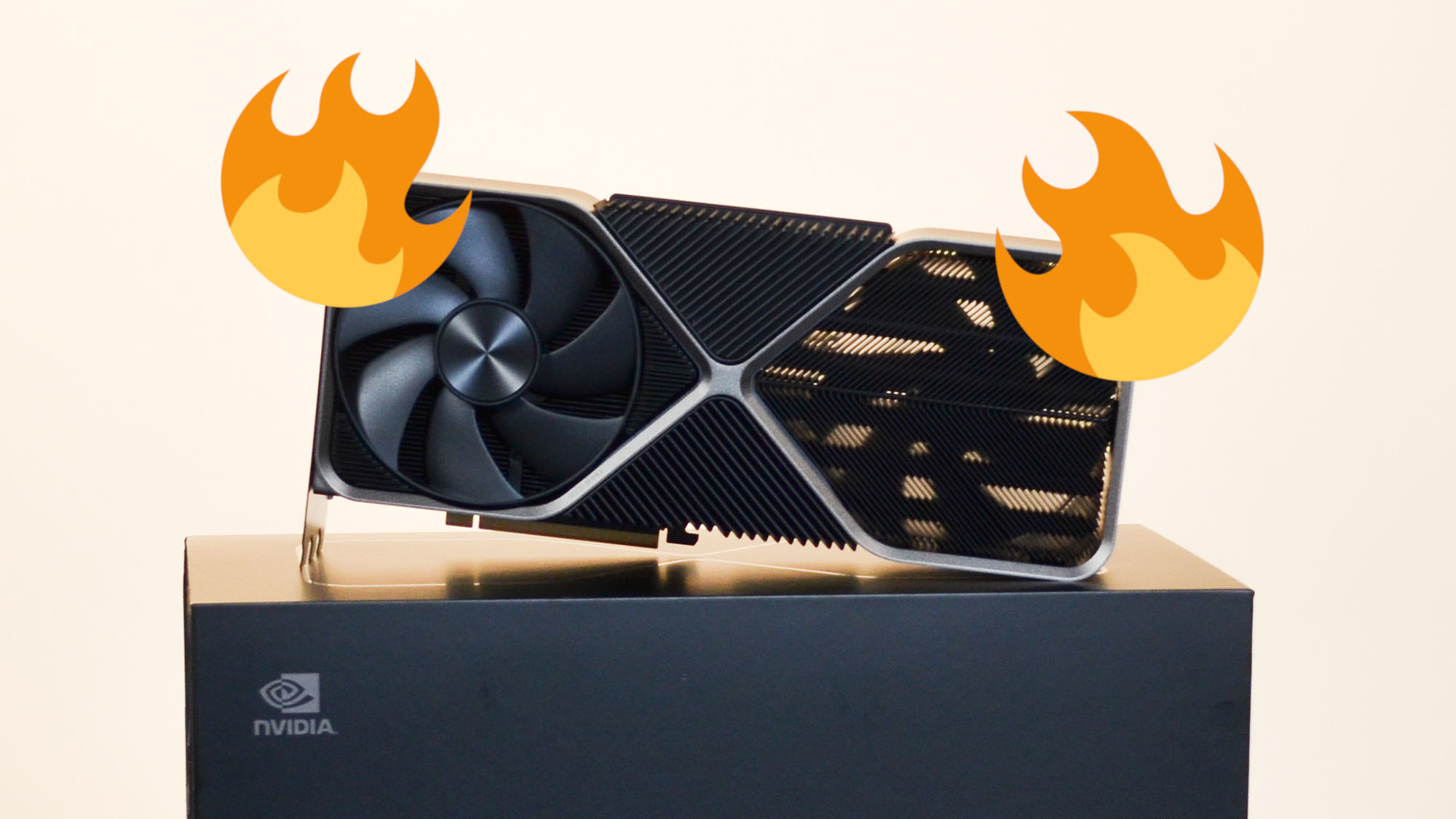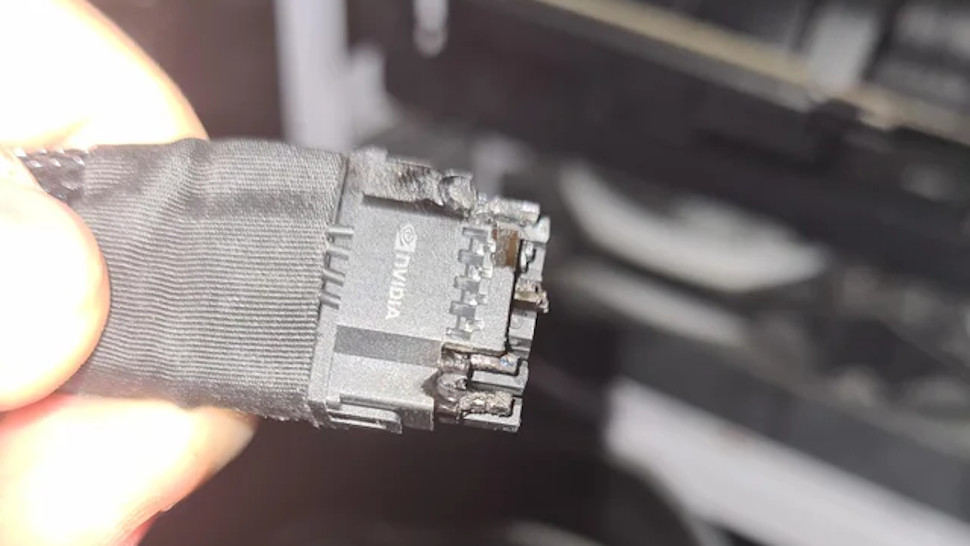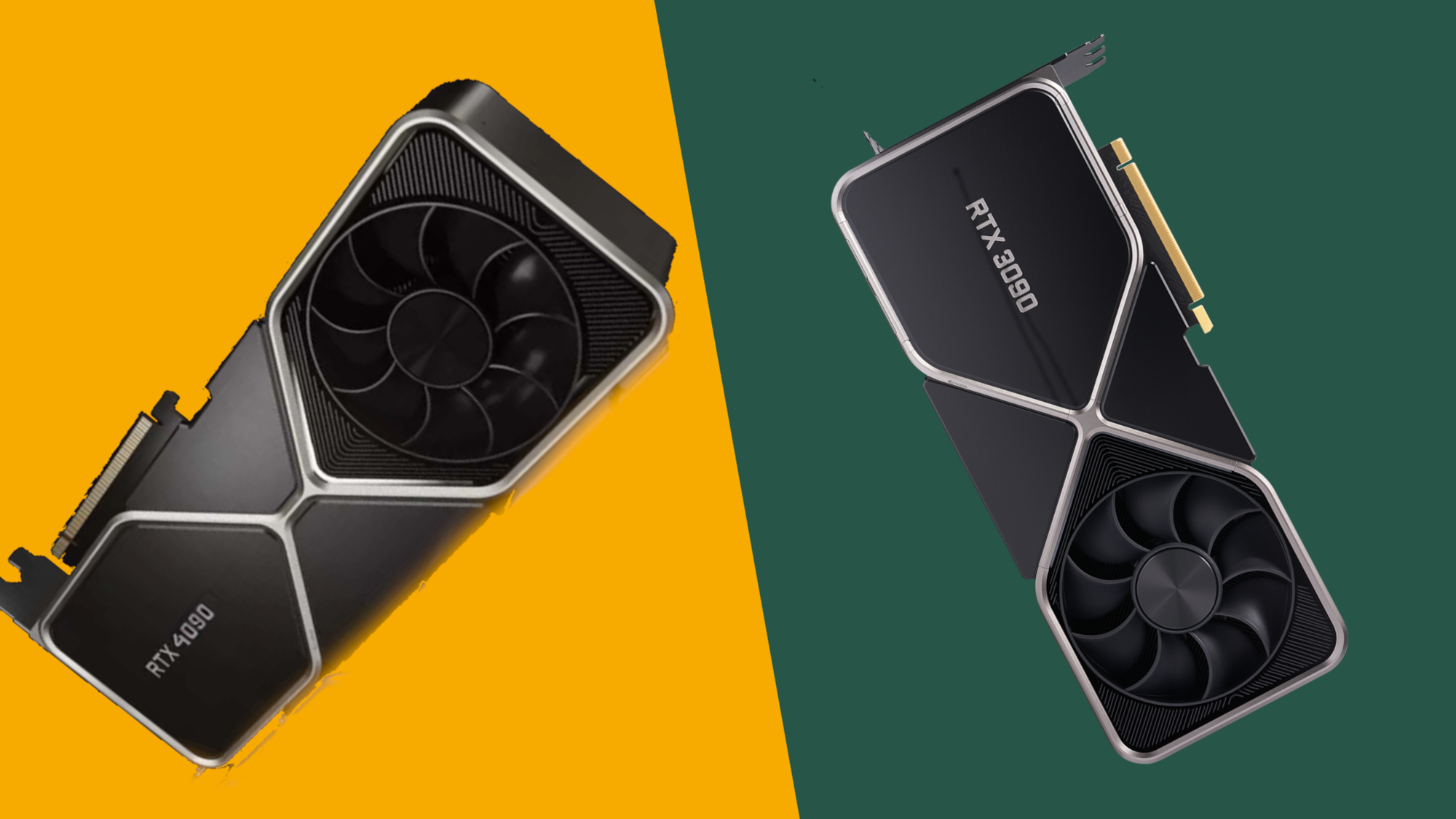Nvidia’s melting RTX 4090 cables are symptomatic of a bigger problem
1080p is fine! 1440p is fine! Stop making GPUs that cost a tonne of cash and then overheat!

Alright, people. I hope you’re ready, because I’m about to rant. If you’re reading this article, you’re probably no doubt aware that some users have been reporting issues with the power connectors for their shiny new RTX 4090 GPUs - more specifically, an issue that caused the adapter cable to literally melt.
It’s not a widespread problem, but at least four users have claimed that the $1,599 graphics card (though you’ll be lucky to find one for that price) has experienced overheating in the adapter connections that was severe enough to damage the cable and in some cases the card itself.
Nvidia has already reached out to the original complainant with a promise that it would investigate the problem, but there hasn’t been a product recall or an official statement from the GPU manufacturer at the time of writing. So now I’m left here thinking: why the hell not?
Cable capers, adapter antics
We haven’t seen a problem like this hit the GPU industry in a while, and it has the potential to cause a serious snafu for Nvidia if it isn’t nipped in the bud ASAP. Every instance of adapter-melting so far hasn’t led to any major consequences, but affected users have reported smoke coming from their systems; all it’s going to take is one unattended PC to cause a house fire for Team Green’s reputation to be badly tarnished.
Nvidia doesn’t even appear - publicly, at least - to be taking the issue very seriously. When YouTuber JayzTwoCents called the power adaptor “dangerous” in a recent video, he claims he received an email from Nvidia’s senior technical marketing manager saying that he was “worrying about issues that don’t exist”.
While there’s little doubt that Nvidia is probably in crisis mode right now, the company isn’t relating this to its customers - a move that will save face in the short term, but leaves it open to further complications. Claims that the GPU maker is ‘investigating’ the issue aren’t reassuring - especially not when we already know what the likely source of the problem is.

Things are heating up
See, the RTX 4090 uses a new type of PCIe power connector called the 12VHPWR, which is designed to work with ATX 3.0 power supplies and the PCIe 5.0 standard. 8-pin has long been the standard for GPU cables, but 12-pin connectors aren’t entirely now - the last-gen RTX 3000 cards used them. But the 12VHPWR is technically a 16-pin connector: it has four additional smaller ‘signaling pins’ for communicating with the GPU, and requires the use of an adapter to function with most currently-available PSUs.
Sign up for breaking news, reviews, opinion, top tech deals, and more.
This adapter comes included with the RTX 4090, whether you buy it directly from Nvidia or opt for a third-party model (like the Gigabyte and Asus cards that the first two reporters claimed were damaged). It was a necessary inclusion, since most users will still have ATX 2.0 power supplies; the ATX 3.0 PSUs that the RTX 4090 was designed to work with are still new and aren’t widely available yet.
There are reports indicating that the 12VHPWR connector was already suspected to have technical issues when used in conjunction with ATX 2.0 power supplies and adapters. Back in September, Wccftech reported that the PCIe Special Interest Group - also known as PCI-SIG, a consortium of tech manufacturers - had sent a communique to its members advising of potential problems with the connector.
I won’t paste the full letter here for brevity’s sake, but the pertinent quotes are thus: "some implementations of the 12VHPWR connectors and assemblies have demonstrated thermal variance, which could result in safety issues under certain conditions", and "we recommend members work closely with their connector vendors and exercise due diligence in using high-power connections, particularly where safety concerns may exist".

Were Nvidia warned?
Reading into this a little, there are two things I want to pick out. The first is "thermal variance" - this would seem to align pretty much perfectly with the overheating issues that have resulted in some RTX 4090 owners getting a melted power cable for their hard-earned cash.
The second important part is "high-power connections". The RTX 4090 is an incredibly power-hungry card, beyond anything else in the consumer graphics card space. It would seem from all the evidence we have so far that Nvidia was made aware in advance that there could be safety concerns surrounding the new GPU, but decided to press ahead with the launch regardless.
I admit, this may be an uncharitable reading of the situation. We can reasonably assume that Nvidia tested its new Lovelace GPUs rigorously, and there’s every chance that it drew the conclusion that the 12VHPWR connection was safe to use with ATX 2.0 power supplies. Nvidia hasn’t published any sales figures for the RTX 4090 just yet, but it’s sure to be a vast amount. 4 cases out of thousands isn’t a lot.
It’s still a very pertinent concern, however, and could land Nvidia in hot water if the overheating issue leads to any lawsuits over damage to property, personal injury, or loss of life. With the PCI-SIG’s warning being public knowledge, I’d be very worried right now if I was working for the GPU giant’s legal team.
Other PCI-SIG members aren’t sitting around
To potentially make matters worse, it looks like AMD, Nvidia’s main competitor in the GPU market, took the PCI-SIG’s recommendation very seriously. So seriously, in fact, that it won’t be using 12VHPWR connectors for its upcoming RDNA 3 graphics cards (which, by the way, will be revealed very soon on November 3).
AMD isn’t the only player taking matters into its own hands. Some have speculated that the connector combustion problem is caused - or at least exacerbated - by strain on the power cable. Due to the RTX 4090’s frankly absurd size, many users have complained about difficulties in fitting the cable inside their PC case, since the power port is found on the top side of the card. This means that the cable may have to be bent at a right angle in order to squeeze it in against the side panel of the case.
With this in mind, both cable supplier CableMod and power supply producer Seasonic have announced that they will be making 90-degree power adaptors for the RTX 4090, which will direct the cable downward rather than horizontally outward. It’s been a speedy move from these two companies, and I’ll be surprised if others don’t follow suit. The adapters aren’t available just yet, though, so there’s definitely still time for more melting incidents to occur.

The real question is: why bother with so much power?
Here’s my real beef with Nvidia over all this pin-scorching business, though. The RTX 4090 is - to be perfectly frank - far more powerful than any private consumer really needs. Even if you want to be gaming at a crisp 4K resolution, the RTX 3090 is still great, cheaper, and less likely to turn your PC into an impromptu incendiary grenade.
The thing is, most people aren’t gaming at 4K. Sure, the RTX 4090 sold a lot of units, but take a look at the most recent Steam Hardware Survey: the vast majority of users are still using older, cheaper GPUs. These are mostly 1000-, 1600-, and 2000-series Nvidia cards, with the only somewhat recent releases in the top ten being the RTX 3060 and 3070. The first ‘premium’ GPU to appear in the list is the RTX 3080, way down in 16th place.
I desperately want GPU manufacturers to properly recognise this. Sure, there’s a small number of people with the money to burn on high-end GPUs, but that shouldn't be the focus - and pushing constantly for bigger, more powerful, more expensive cards only fosters animosity from the many gamers who can’t afford them.
Nvidia is arguably the worst offender here; always working to produce the most powerful GPU on the market, and promoting those cards long before we see any of each generation’s budget offerings. Who knows how long it’ll be before we see a trace of the RTX 4060. At least Nvidia has walked back its misnamed RTX 4080 12GB model, and will hopefully be turning it into a more affordable RTX 4070 instead.

The price isn’t right
Still, AMD isn’t innocent either. A recent leak seems to indicate that we could be getting a seriously high-end Radeon RX 7900 XTX as the flagship next-gen GPU from Team Red next month, and at this point I hardly even care. Both AMD and Nvidia have released some stellar budget graphics cards over the years, and those seem to be the ones people actually want (and can afford, for that matter).
Listen, if you’ve got the cash and want a turbo-charged gaming rig, I’m not judging. But let’s face it: 1440p, even 1080p, is a perfectly acceptable resolution to play games at. Hell, I got along just fine playing Gamecube games at 480p. 4K and 8K TVs I get, but computer monitors? Most of us play PC games sitting right in front of the screen, for crying out loud.
Perhaps if the industry wasn’t so obsessed with pushing the envelope right off the table when it comes to the performance capabilities of graphics technology, we wouldn’t be in this current cable-frying situation. After all, it’s a simple fact that more powerful GPUs require more power. I haven’t seen any complaints about Intel’s sensibly-priced new Arc A770 card exploding due to thermal issues.
So take heed, Nvidia. The 8K revolution might be here for you, but the rest of the world hasn’t caught up yet - and most of us can’t afford it anyway. New displays, new power supplies… it’s all getting seriously expensive, and the right thing to do right now would be to focus on delivering a premium experience for as low a price as possible. If you think I’m wrong, come at me on Twitter.

Christian is TechRadar’s UK-based Computing Editor. He came to us from Maximum PC magazine, where he fell in love with computer hardware and building PCs. He was a regular fixture amongst our freelance review team before making the jump to TechRadar, and can usually be found drooling over the latest high-end graphics card or gaming laptop before looking at his bank account balance and crying.
Christian is a keen campaigner for LGBTQ+ rights and the owner of a charming rescue dog named Lucy, having adopted her after he beat cancer in 2021. She keeps him fit and healthy through a combination of face-licking and long walks, and only occasionally barks at him to demand treats when he’s trying to work from home.